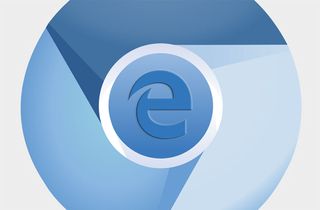Microsoft confirms plans to retool Edge browser around Chromium
The same platform that powers Google's Chrome browser will also power Edge.

Microsoft on Thursday announced that it is rebuilding its Edge browser around Google's open source Chromium platform, the same one that powers Google's own Chrome browser. The rumor turned out to be true, in other words.
I noted earlier this week that this would be a big shift in strategy. While Microsoft had no comment at the time, it offered up several details in a blog post today, discussing its reasoning and what it hopes to accomplish.
"Our goal is to do this in a way that embraces the well-established open source model that’s been working effectively for years: meaningful and positive contributions that align to long-standing, thoughtfully designed architecture, and collaborative engineering. Together we seek the best outcome for all people who use the web across many devices," Microsoft wrote.
Microsoft considers itself "one of the world's largest supports of open source projects," and it wants you to believe that too. The company faces an uphill battle in that regard, considering that software like Windows and Office are not open source. However, it did recently purchase GitHub for $7.5 billion, and promised not to screw things up.
Whether or not you buy into Microsoft's love of open source software will play a role in how optimistic you are (or are not) in its plans to "create better web compatibility" by embracing Chromium.
"Ultimately, we want to make the web experience better for many different audiences. People using Microsoft Edge (and potentially other browsers) will experience improved compatibility with all web sites, while getting the best-possible battery life and hardware integration on all kinds of Windows devices," Microsoft added.
Microsoft is essentially taking a very different approach with Edge than it did with Internet Explorer back in its heyday. In the early days of web browsing, Microsoft embraced proprietary standards, and it was particularly difficult for some business professionals to leave IE behind because so much of what they did was built for IE.
PC Gamer Newsletter
Sign up to get the best content of the week, and great gaming deals, as picked by the editors.
There's been a fundamental shift, though, one towards open web standards. Importantly, web developers are no longer hyper-focused on IE, and haven't been for a long time. So, Microsoft is getting rid of its browser's EdgeHTML rendering and Chakra Javascript engines, and replacing them with Blink and V8, the key components of Chromium.
"Our intent is to align the Microsoft Edge web platform simultaneously (a) with web standards and (b) with other Chromium-based browsers. This will deliver improved compatibility for everyone and create a simpler test-matrix for web developers," Microsoft said.
This won't happen overnight. Microsoft says the major under-the-hood retooling will take place "over the next year or so." It will also happen out in the open, the company says.
Microsoft will also be porting Edge over to "all supported versions of Windows," like Windows 7, and other platforms such as macOS. In addition, Microsoft says it will update Edge more frequently.
All indications are that it will still be called Edge, it just won't be the same Edge that exists today.
Paul has been playing PC games and raking his knuckles on computer hardware since the Commodore 64. He does not have any tattoos, but thinks it would be cool to get one that reads LOAD"*",8,1. In his off time, he rides motorcycles and wrestles alligators (only one of those is true).
Most Popular






